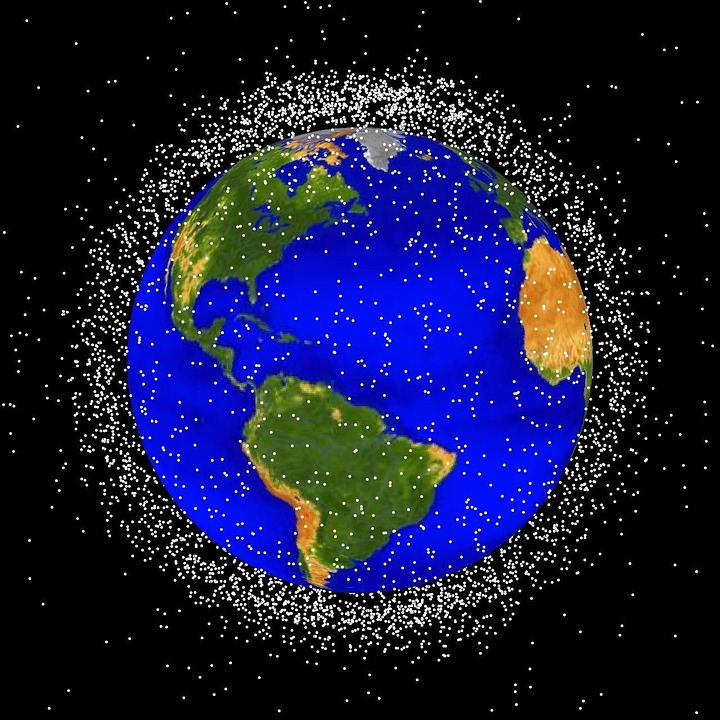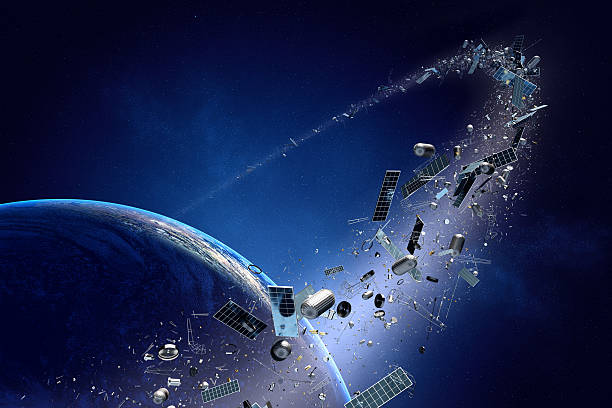We recently examined how and why Jupiter’s moon, Europa, could answer the longstanding question: Are we alone? While this small icy world gives plenty of reasons to believe why we could—and should—find life within its watery depths, it turns out our solar system is home to a myriad of places where we might find life. Much like how the Voyager missions gave us the first hints of an interior ocean swirling beneath Europa’s outer icy shell, it was only fitting that Voyager 1 also gave us the first hints of the potential for life on Saturn’s largest moon, Titan, as well.
“Titan is fascinating because it is so far away from Earth, so cold, and made of such different materials on the surface that it should be impossible to understand,” says Dr. Jani Radebaugh, a Professor in the Department of Geological Sciences at Brigham Young University whose research focuses on Titan. “But we find that Earth-like landscapes are there in abundance – rivers, lakes, mountains, wind-swept deserts, and my favorite – giant dunes like in the Sahara Desert.”
Despite Voyager 1’s cameras being unable to penetrate Titan’s thick atmosphere, it successfully gathered data on Titan’s surface temperature and air pressure, with some scientists previously conjecturing that Titan might contain lakes of liquid hydrocarbons due to the moon’s extremely cold temperatures and abundance of methane. While this well-known component of carbon and hydrogen exists in a gaseous form here on Earth, methane can also exist in liquid form in extremely cold temperatures, much like Titan. Voyager also confirmed that Titan contained traces of ethane, propane, acetylene, and other organic molecules, with its atmosphere comprised largely of nitrogen. Organic molecules are considered the simple building blocks of life, which is why Titan is so intriguing for the field of astrobiology and finding life beyond Earth.
While NASA’s Cassini spacecraft provided us infrared images of Titan’s surface, which revealed hydrocarbon seas and moving sand dunes, it wasn’t until the European Space Agency’s (ESA) Huygens probe landed on the surface of Titan in January 2005 that we got our first up-close views of the surface of this mysterious moon. It was through these images that we confirmed evidence of recent surface liquid activity due to the abundance of rounded pebbles within the images.


“At a bare minimum, we think that life requires: (1) energy, (2) water, and (3) carbon,” says Dr. Jason Barnes, who is a Professor in the Department of Physics at the University of Idaho. “Solar and geothermal energy abound throughout the solar system, so the energy part isn’t rare. We used to think that water was rare, but now we recognize several Ocean Worlds in the outer solar system with voluminous oceans. Carbon, however, seems to be quite rare—at least in usable form (i.e., not CO2). Titan’s carbon chemistry complexity is second only to Earth’s, and we don’t yet know the extent of it even!”
Both NASA’s Cassini and ESA’s Huygens probe gave scientists a treasure trove of data about Titan to pour over for years to come, but it’s NASA’s upcoming Dragonfly mission that promises to be the real gamechanger in the hunt for life on Saturn’s largest moon. The goal of this dual-quadcopter will be to literally “hop” to various locations on Titan searching for biosignatures on its frigid surface throughout its two-year mission, which is scheduled to launch in 2027 and arrive at Titan in 2034.

Dr. Barnes, who is also the Deputy Principal Investigator of Dragonfly, says he couldn’t be more excited for the mission.
“It’s going to be an adventure of a lifetime,” he says. “Dragonfly’s biggest contribution to our knowledge of Titan’s habitability will come from our measurements of chemistry. Cassini measurements of Titan’s chemistry ended at molecular weight of 100 – not because Titan’s molecules ended there, but because the mass range of our instruments ended there. And that was way up high in the atmosphere, too, not on the surface. So, Dragonfly will land on the surface and ingest both (1) organic sediments, and (2) water ice. Together, we hope to learn how far organic chemistry has progressed on Titan, and indeed whether it has progressed to the point of prebiotic chemistry or life itself.”
With the Huygens probe sitting frozen on Titan’s surface, its batteries having lasted for only 90 minutes, and Cassini intentionally burning up in Saturn’s atmosphere at the end of its respective mission in 2017, for now we wait for Dragonfly to liftoff into history. But while we wait, we wonder.
We wonder what kinds of life we might find on Titan, on either its surface or the depths of its liquid methane lakes.
“Because Titan contains all the right molecular ingredients for life, coupled with the presence of solar or internal heat energy and liquid water from volcanoes or impact craters, it may just be the perfect place for life to have formed,” explains Dr. Radebaugh. “Since we haven’t seen this yet outside Earth, it’s hard to know exactly what is required for life to succeed, but if we start with those basic requirement premises and then just go take a look, we will learn a lot about the viability of life in the solar system and across the universe.”
And with this, we wonder if Titan will finally answer, “Are we alone?”
As always, keep doing science & keep looking up!
Featured Image: Natural color image of Titan taken by Cassini in January 2012. (Credit: NASA/JPL-Caltech/Space Science Institute)
The post Will Titan finally answer, ‘Are we alone?’ appeared first on Universe Today.
















